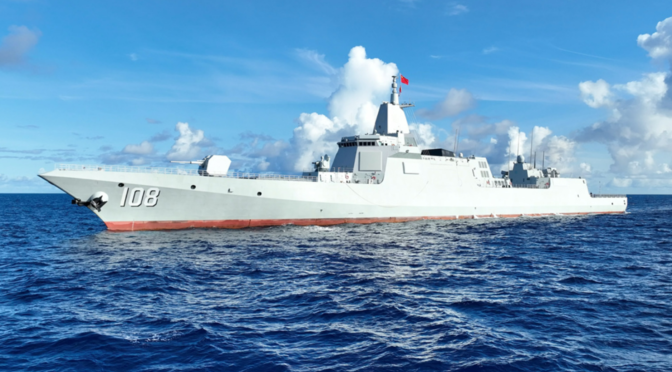By Dmitry Filipoff
This past week CIMSEC featured writing submitted in response to our Call for Articles on readiness for Pacific war in 2027.
Authors covered a wide variety of topics, including force design, operational concepts, and strategic deterrence. Each of these efforts offers some possibility for improving advantage in the near-term. But with 2027 being only a few years away, it remains unclear whether defense institutions will act with the appropriate sense of urgency and clarity of purpose.
Below are the articles and authors that featured during the topic week. We thank them for their excellent contributions.
“Weaponized Containers: A Warship-in-a-Box for Warfighting Advantage,” by Steve Wills
“Any conflict with a peer opponent would be global, and historically navies find that they never have enough ships to cover all tasks that surface in the course of a major conflict. Using the shipping container, the building block of the maritime world, represents a relatively quick and easy method of creating additional naval capacity to improve warfighting advantage.”
“Considering Global War: A Strategy for Countering Revisionist Powers,” by Justin Cobb
“A denial strategy focused exclusively on Taiwan is not a true strategy but rather a subsidiary campaign objective. Zoom out and assess the broader implications of countering destructive revisionist powers. Western aligned nations must begin expanding military power and cooperation immediately and address the dilemmas that define effective force design and deterrence posturing globally.”
“The Maritime Convoys of 2027: Supporting Taiwan in Contested Seas,” by Nathan Sicheri
“Unknown factors of American public support, Taiwanese political will, and Taiwan’s ability to sustain resistance may mean that decisive sea control may come too late to supply and support Taiwan within the shrinking window of opportunity. The U.S. must carefully consider how to provide logistical support to a besieged island deep within an adversary’s weapon engagement zone and with little enabling sea control.”
“The Four-Block Littoral Force Revisited: Force Design and Marine Littoral Regiment Boarding Teams,” by Clay Robinson
“Force Design should be modified to embrace this mission by adding Maritime Interception Operations (MIO) to the core mission sets of MLRs. The MIO mission is currently assigned only to Marine Expeditionary Units, but the MLR’s low signature, platoon-sized maneuver elements with organic operational mobility, combined with a “mothership” such as an Expeditionary Mobile Base (ESB) and Littoral Combat Ships (LCS), could make the MLR ideally suited for large-scale MIO.”
“To Prepare for Pacific War by 2027, the United States Must Harden its Southern Flank,” by Henry Ziemer
“While it remains improbable that China would seek to contest the Western Hemisphere theater with the United States by 2027, the combination of these hybrid tactics could severely undermine the United States’ position in the very region most critical for U.S. physical security.”
“Deterrence 2027: Keeping the Threat at Bay,” by James Wirtz
“If there is little enthusiasm today about engaging in a naval showdown in the Taiwan Strait, why not concentrate on altering Beijing’s perception of the military and political setting so that the prospect of hostilities appears unattractive? Why do we not do everything in our power to bolster our maritime deterrent to spare the world a potentially catastrophic conflict in the western Pacific?”
Dmitry Filipoff is CIMSEC’s Director of Online Content. Contact him at Content@cimsec.org.
Featured Image: PLA Navy Type-055 guided-missile destroyer Xianyang (Hull 108) attached to a naval destroyer flotilla under the Chinese PLA Southern Theater Command steams to a designated sea area during a multi-subject maritime drill on October 20, 2024. (eng.chinamil.com.cn/Photo by Zhou Tianyu)

